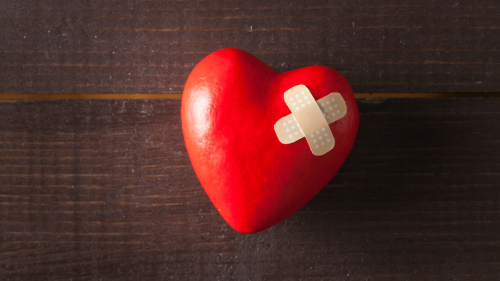In times of emotional distress, trauma, or challenging life experiences like the death of a spouse or a friend, the healing process is crucial for restoring mental and emotional well-being. While traditional therapy and medical interventions play a significant role, professionals nowadays offer alternative ways to heal. Today, creative projects have emerged as a powerful and complementary tool to aid in the healing journey.
You may have heard how engaging in artistic endeavors such as painting, writing, music, or crafting aids in grief recovery. These artistic activities provide a productive therapeutic outlet, foster self-expression, and promote personal growth. Let’s explore the profound impact of creative projects on the healing process and delve into how they can serve as a source of hope and empowerment for individuals who have lost someone.
Harnessing the Power of Creativity in Healing
One of the primary benefits of creative projects in the healing process is their ability to facilitate self-expression. The death of a loved one creates havoc, so in these difficult times, individuals may struggle to communicate their emotions verbally. Bottling up feelings can sadly lead to emotional suppression and an eventual breakdown.
Engaging in creative activities allows those in mourning to channel their feelings and thoughts into tangible forms. These projects give them a safe space to express their pain, joy, anger, or hope. Whether through writing in a journal, painting on a canvas, or composing music, the act of creating becomes a medium for releasing inner turmoil and embracing authenticity.
Healing Through Mindfulness and Flow
If you notice, the creative process demands focus and presence so you can successfully finish projects. Hence, engaging in artistic endeavors allows individuals to enter a state of mindfulness and flow. Flow, often referred to as being “in the zone,” is a state of complete absorption in an activity where one’s skills align with the challenges at hand.
Many studies show that this meditative-like state reduces stress and anxiety, allowing individuals to momentarily escape their troubles while finding solace in the creative process. The therapeutic aspect of flow has been associated with improved mental well-being and enhanced coping mechanisms, making it an invaluable aspect of the healing journey.
The Therapeutic Impact of Different Creative Projects
The therapeutic impact of engaging in various creative projects is profound and far-reaching. From visual arts providing emotional release to writing fostering self-discovery, each avenue offers unique healing benefits, making creativity a powerful ally in the journey to well-being. Let’s check them below:
1 . Visual Arts and Emotional Release
Engaging in visual arts such as painting, drawing, or sculpting can serve as a potent outlet for emotional release. The abstract nature of art allows individuals to express emotions that may be difficult to convey through words alone. Creating art helps to:
- Process complex feelings
- Promotes self-reflection
- Assists in identifying the root causes of emotional distress.
Most of all, art therapy has been used effectively to help individuals, especially children, and adolescents, cope with trauma, grief, and other emotional challenges.
2. Writing as a Tool for Self-Discovery
Writing can be incredibly therapeutic in various forms like journaling, poetry, or storytelling. Penning down thoughts and feelings can help individuals gain clarity and perspective on their experiences. Moreover, writing provides a private space to explore one’s inner world without fear of judgment, fostering self-awareness and personal growth. Many people find comfort in keeping a journal during difficult times as it becomes a trusted confidant to share their fears, hopes, and dreams.
3. Music and Emotional Resonance
Music has an extraordinary ability to evoke emotions and memories. That’s why even something as simple as curating what funeral songs to include in the service can be a very meaningful and powerful way to celebrate the life that was lost. Engaging with music, whether through playing instruments in honor of someone or listening to favorite songs of the deceased, can help individuals do the following:
- Process hard emotions
- Provide comfort during distress
- Foster a sense of connectedness
Music therapy has been widely used to support healing in various populations, including individuals with post-traumatic stress disorder (PTSD), depression, and anxiety. The rhythm, melody, and lyrics can all act as stabilizing forces during turbulent times.
4. Crafting and Empowerment
Engaging in crafting activities, such as knitting, making clothes, scrapbooking, woodworking, or pottery, promotes a sense of achievement and empowerment. The process of creating something with one’s hands can be deeply satisfying and boost self-esteem. Additionally, craft projects often involve repetitive motions, which can induce a calming effect similar to meditation. For individuals struggling with anxiety due to death or facing challenges related to self-worth because they lack confidence when their partner is gone, crafting provides a way to build confidence and regain a sense of control over their lives.
Exploring the Connection Between Creativity and Healing
Beyond the immediate therapeutic benefits, the relationship between creativity and healing runs deeper, often leading individuals to discover new aspects of themselves. Creative projects can act as a bridge between the conscious and subconscious mind, unveiling suppressed emotions and memories. Through this introspective process, individuals who are in mourning may experience breakthroughs in their healing journey, gaining insights into unresolved issues and finding a path toward forgiveness and acceptance.
Most of all, creative projects can inspire hope and resilience. If you engage in artistic projects, you’ll have something to look forward to and feel optimistic about. And when you witness your progress in your artistic endeavors, you gain a tangible reminder of your inner strength and capacity for growth. The ability to create something beautiful or meaningful even amidst the pain or difficulty of losing someone serves as a testament to your resilience and provides a positive outlook when attending a memorial service.


